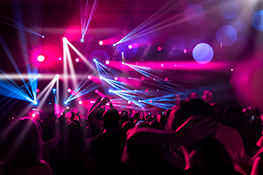Stage Lighting: Beyond the Spotlight – Creative Techniques for Stunning Effects
Introduction: Illuminating the Unexpected
Stage lighting is more than just illuminating the actors; it’s a powerful storytelling tool capable of transforming the mood, setting, and emotional impact of any performance. While the spotlight remains a staple, today’s lighting designers are pushing boundaries, employing innovative techniques to create truly stunning visual spectacles. This article delves into those techniques, exploring how you can elevate your productions beyond the basic and achieve breathtaking results.
Mastering Color Temperature and Gel Combinations
The subtle art of manipulating color temperature is often overlooked. Understanding the interplay between warm (tungsten) and cool (daylight) tones is crucial for setting the atmosphere. Pairing different colored gels strategically can create complex and nuanced lighting schemes. Explore the possibilities of combining warm amber with cool blue to create a dramatic contrast, or experiment with subtly shifting color temperatures throughout a scene to mirror the evolving emotional landscape.
Beyond the Basics: Exploring Gobo Projection
Gobos, or gobo patterns, are metal or glass templates placed in front of a light source to project intricate shapes and designs onto the stage. While commonly used to create simple patterns, the creative potential of gobos extends far beyond basic shapes. Consider using custom-designed gobos to project abstract images, iconic symbols, or even moving landscapes. The combination of gobo projection with color changes and moving lights can create an immersive visual experience unlike any other.
Harnessing the Power of Moving Lights
Moving lights have revolutionized stage lighting, offering unparalleled versatility and control. These intelligent fixtures allow precise adjustments of color, position, beam shape, and gobo projection, opening up a vast array of possibilities. Learn to master the art of programming moving lights to create sweeping washes, dynamic chases, and perfectly timed cues. Explore techniques like beam shaping to create dramatic silhouettes or focused spots, and utilize the possibilities of advanced effects like strobing and color-mixing for heightened impact.
The Art of Light and Shadow: Silhouette and Backlighting Techniques
Often overlooked, the effective use of shadows can profoundly impact the mood and emotional resonance of a scene. Mastering backlighting techniques can create dramatic silhouettes, adding depth and intrigue. Strategic use of shadows can also help highlight specific areas, draw attention to crucial moments, or create a sense of mystery and suspense. Experiment with different light angles and intensities to create varied shadow effects, ultimately enhancing the storytelling.
Integrating Practical Lighting Elements: Seamless Realism
Practical lights – lamps, candles, or other light sources physically present on the stage – add a layer of realism and immersion that cannot be replicated by conventional stage lighting. Carefully integrating practical lights into your design can enhance the believability of the set and create a more intimate connection with the audience. Make sure to use fixtures that meet safety standards and consider the impact of practical lights on the overall lighting design.
Conclusion: Unleashing the Creative Potential of Stage Lighting
The techniques discussed here merely scratch the surface of the creative possibilities available to stage lighting designers. By mastering these techniques and continuously experimenting with new approaches, you can elevate your productions to new heights, captivating your audience and creating unforgettable visual experiences. Remember, the goal is not simply to illuminate the stage, but to tell a story, evoke emotion, and transport the audience to another world, all through the power of light.


 Auditorium Construction Services
Auditorium Construction Services 